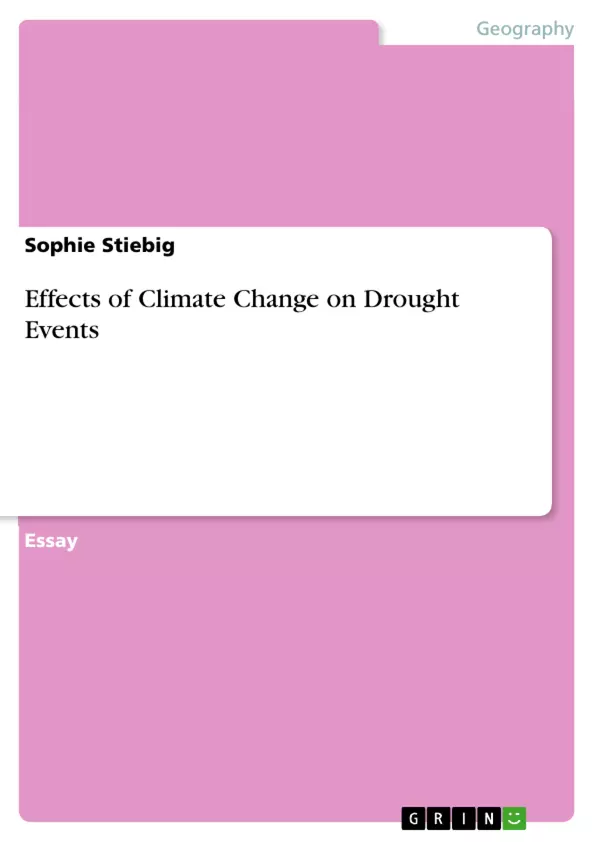In this paper the anthropogenic and also meteorological droughts will be discussed with the effects and problems they arise and how they may be affected by climate change. Additionally, two example cases namely Kazakhstan and South Africa demonstrate how these countries struggle with water stress and droughts. After this, droughts as a positive process response system will be examined to understand the areas that need to be considered when thinking about drought early warning systems and managing water stress due to drought events.
It is commonly acknowledged that the increasing population and economic growth lead to a growing water demand. Especially arid and semi-arid regions suffer from water stress, which is mainly caused by human activities. Since it is widely agreed on that water stress is man-made, it is interesting to discover what role climate change plays in the decrease of water resources and with it in detail the potential of causes for more severe drought events.
Table of Contents
- Effects of climate change on drought events
- The impact of human activity
- Droughts as a positive process response system
- Effects of drought events on specific regions
- South Africa
- Ways to deal with drought events
Objectives and Key Themes
This paper explores the intricate relationship between climate change and drought events, focusing on the combined impact of anthropogenic activities and meteorological factors. The paper investigates how these factors contribute to water stress, particularly in arid and semi-arid regions, and examines the specific examples of Kazakhstan and South Africa.
- The influence of human activities on water stress and droughts
- The role of climate change in intensifying drought events
- The impact of drought events on specific regions, particularly South Africa
- Strategies for adaptation and mitigation of drought events
- The importance of drought early warning systems and water resource management
Chapter Summaries
- The paper begins by discussing the impact of human activities on water stress. It highlights the growing water demand due to population growth, industrial and agricultural activities, and changing living standards, particularly in arid and semi-arid areas. The example of Kazakhstan is presented to illustrate how anthropogenic factors, including governmental water distribution policies, contribute to water stress.
- The paper then examines droughts as a positive process response system. It describes how a lack of precipitation, coupled with rising temperatures due to climate change, can lead to drier surfaces, vegetation loss, and decreased evapotranspiration. This feedback loop amplifies the impact of drought events.
- The paper focuses on the effects of drought events in South Africa, highlighting the severe drought that occurred in 2015. The paper discusses how the country's climate, influenced by the Tropical Convergence Zone and El Niño-Southern Oscillation (ENSO) events, contributes to drought vulnerability. The case of Cape Town's "Day Zero" in 2018 illustrates the severe consequences of drought events, including food insecurity, poverty, and health challenges.
- The paper concludes by emphasizing the need for adaptation strategies and improved drought early warning systems (DEWS). It highlights the importance of water resource management, efficient irrigation practices, and building drought resilience to mitigate the negative consequences of drought events.
Keywords
This text focuses on the complex relationship between climate change, water stress, and drought events. Key themes include anthropogenic activities, meteorological droughts, water resource management, drought early warning systems (DEWS), food security, and the impact of drought events on specific regions like Kazakhstan and South Africa.
- Quote paper
- Sophie Stiebig (Author), 2020, Effects of Climate Change on Drought Events, Munich, GRIN Verlag, https://www.grin.com/document/994821



